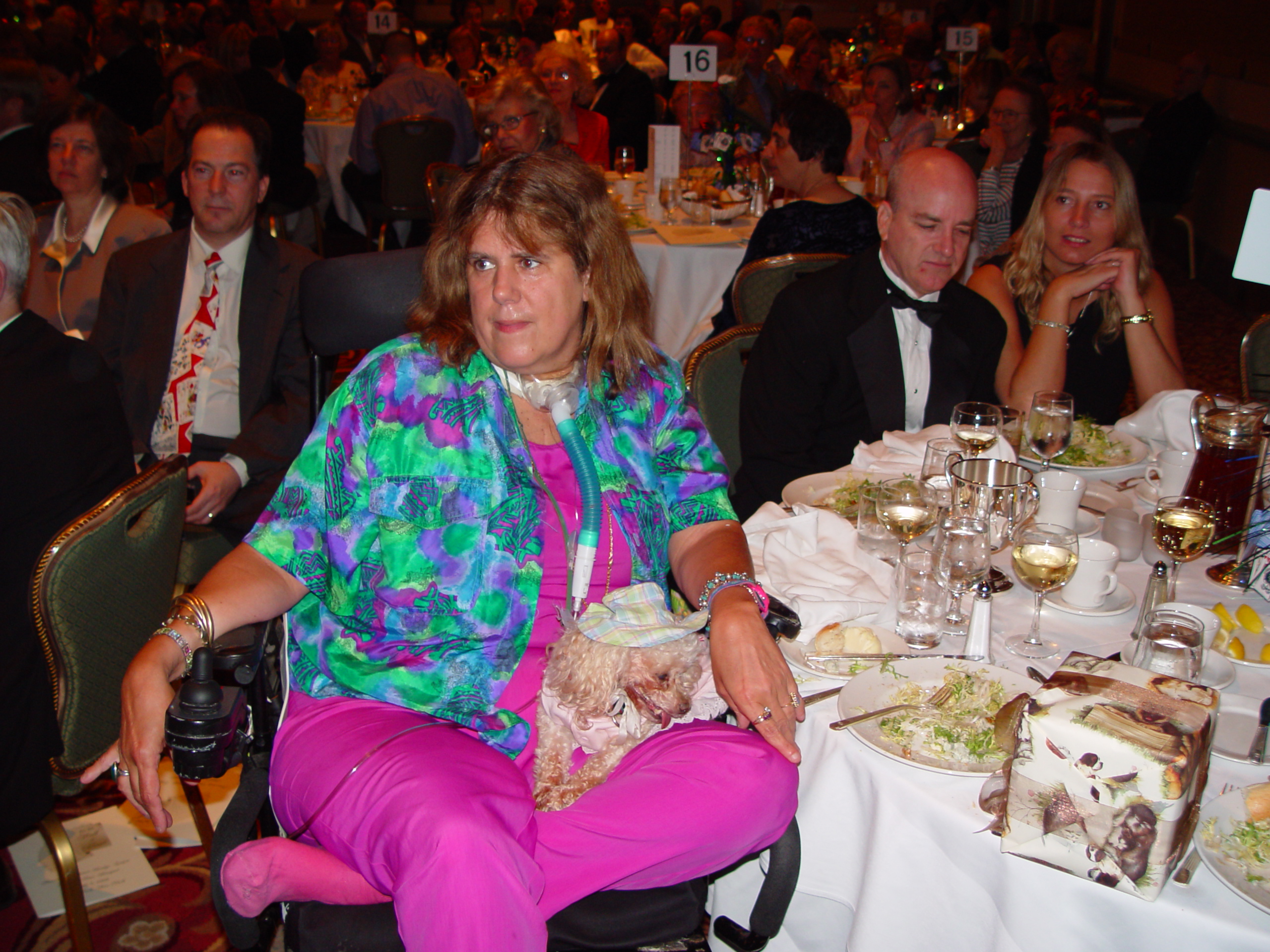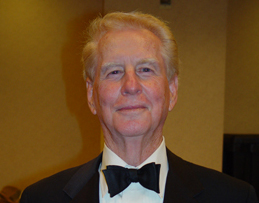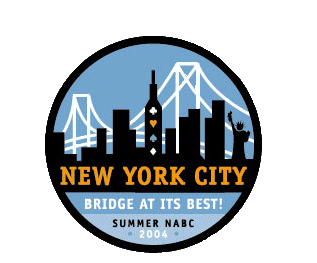Hall of Fame (cont'd)
Weichsel told about his mother, whom he
described as the worst bridge player in history.
“But she was smart. One time I had to play with her
to fill out the movement, and she raised me every
time I bid. She’d raise me with a doubleton, a
singleton and even a void. But somehow it all
worked out and we won! Mother was ecstatic, and
I consider that to be my greatest achievement in
bridge.”
Weichsel said there’s something magical about
his partnership with Sontag. He also paid high
tribute to Rose Meltzer, who has a world
championship to her credit as a teammate of
Weichsel.
Amalya Kearse
Jacqui Mitchell feels it’s a feather in the cap
for everyone because Kearse has become a
member of the Hall of Fame. “It’s an honor that
was long overdue.”
Mitchell let us in on a couple of stories about
Kearse that weren’t exactly judicial. “Did you
know Amalya won the hula hoop contest when she
was at Wellesley College? That’s right. She swung
those hips until she had it just right.” That’s not
quite how it was. Actually Kearse was rolling the
hula hoop. “But not only did she win,” said Jacqui.
“She actually practiced!”
Then there was the time she was all hot and
sweaty from a tennis match. “Is the match over?”
someone asked her. “No way,” she said, “he’s
ahead.” Jacqui said that sounded OK until she
discovered that the “he” was a 10-year-old cousin.
Kearse says the best way to get known is to do
something big outside your own field. “In the
judicial world, I’m known as the judge who plays
bridge.”
She got into bridge writing because someone
told her that “Bridge a la Une,” a French book by
Jose LeDentu, was perhaps the best book on
bridge. She agreed when she read it, and she
decided to translate it into English. Later she had
the pleasure of meeting LeDentu, and they coproduced
the book in English. “We corresponded
in French, but we talked in English.”
She believes bridge is the quintessence of the
spirit of Olympic sport. “We can play together, so
we should be able to work together,” she said.
Jeff Rubens
“Some young boys grow up with ‘Playboy,’ but I grew up with ‘The Bridge World,’” said Larry Cohen as he introduced Rubens. “His writings on bridge are mind-boggling. His footprint is on everything that gets into his magazine.
“But he’s very stingy with exclamation points. I almost have to sign my life away to get him to let me put an exclamation point after a bid.
|
|

Holding the Sidney Lazard Jr. Sportsmanship
Trophy is the winner, Lynn Deas.
“Jeff ended his playing career too soon. He was a fine player – he even played in the Bermuda Bowl in 1973 with B. Jay Becker.”
When Rubens took the mike, he told of interesting experiences he has had all his life with partners, teammates, opponents, acquaintances, editors, co-authors, contributors, business associates and correspondents. “We all have one thing in common – the love of the game,” he said.
Bob Mosher, who used to play with Rubens long ago, was on hand to congratulate Rubens. “It’s the first time I’ve seen Jeff in 40 years.”
Jimmy Maier
“The greats often die young,” said Alan Truscott as he told about Maier.
“Maier was great at anything he tried to do. He was a fine scholar and he was a tennis star when he was only 19. His bridge was so good that he was asked to join the Four Aces when Michael Gottlieb resigned from the team in 1936.
“They were headed for the first world championship tournament back in 1937, but Ely Culbertson got into it. He insisted that the team be called representatives of the Culbertson System. That was too much, so the Four Aces refused to go.”
Maier suffered a heart ailment in 1941 and died two months later at the age of 33. Arthur Maier, his cousin, represented the family at last night’s festivities. He was accompanied by his wife Susan.
Harold Harkavy
“I never saw Harry Harkavy make a mistake,” said Richard Freeman about his old friend. “I remember the time everyone in the North-South field was playing one notrump and making either 90 or 120. But Harry made plus 600. What’s so unusual about that? Harold was sitting East-West!”
Harkavy had many triumphs to his credit when he developed pancreatitis at the age of 50. He died a short time later. His best year was 1963 when he won both the Vanderbilt and the Spingold. He also triumphed in the Chicago (now the Reisinger) in 1952, and he was a victor in the Master Mixed Teams four times. He had a reputation for being particularly deadly when it came to opening leads.
|
|
Lynn Deas
Beth Palmer and Deas began their partnership 24 years ago. “Lynn is a very strong person,” said Palmer. “She has consistently shown courage and valor. She has shown just how competitive she is by the way she has overcome the adversity her health has given her.”
She told about the time during the 1989 Venice Cup in Australia when the Americans were down 86 IMPs against the Dutch. “Some of the players were discouraged,” said Palmer, “but not Lynn. ‘We can get it back,’ she said – and we did.”
Deas expressed thanks for the award, but she gave all the credit to her partners and teammates.

Former ACBL CEO Roy Green
Service with a smile
Former ACBL Chief Executive Roy G. Green
was known for his good public relations when he
was still working in Memphis. He often went for
refreshments for opponents during games when he
and his wife, Mary, were at tournaments.
Thursday night, Green went to the Grand
Ballroom in a tuxedo, fresh from an appearance as
chairman of the ACBL Hall of Fame dinner.
He stopped by the coffee table to fetch a cup
and was doing so when a woman approached.
“I’d like a cup of coffee,” she said.
Without hesitating, Green pushed the cup he was making for himself to her.
“Would you like cream?” he inquired. “Yes,” she said. “Would you like regular cream or half and
half?” “Half and half,” she said. Green poured. “Do you want sugar?” asked the ex-CEO. “Yes,” she said, “one packet.”
Green put in the sugar and asked if he
could stir it.
He did so, handed her the cup and said with a
sly smile:
“You know, I work for tips.”
All of a sudden, the woman got a quizzical look on her face. “Do you work here?” she asked.
The woman was turning away, so she didn’t
notice that Green had maintained a diplomatic
silence.
|

